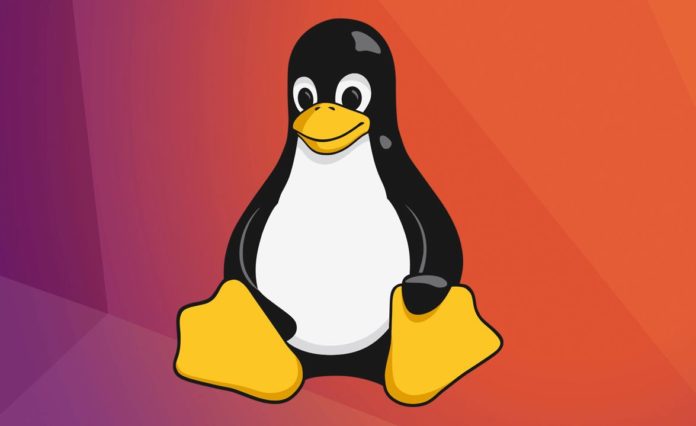
Within the world of operating systems, you have choices. Ask most consumers and chances are they’ll only know about Windows or macOS. On a good day, however, that short list could also include Chrome OS. But there’s another operating system, one that offers users significant benefits over the competition.
That operating system is Linux.
What Is Linux?
Linux started out in 1991 as a project by then university student Linus Torvalds who wanted to have an affordable alternative to Minix for his studies. Linus initially posted a Usenet message to the newsgroup comp.os.minix. That message said:

Hello everybody out there using minix –
I’m doing a (free) operating system (just a hobby, won’t be big and professional like gnu) for 386(486) AT clones. This has been brewing since April and is starting to get ready. I’d like any feedback on things people like/dislike in minix, as my OS resembles it somewhat (same physical layout of the file-system (due to practical reasons) among other things).
I’ve currently ported bash(1.08) and gcc(1.40), and things seem to work. This implies that I’ll get something practical within a few months, and I’d like to know what features most people would want. Any suggestions are welcome, but I won’t promise I’ll implement them 🙂
Linus ([email protected])
Yes – it’s free of any minix code, and it has a multi-threaded fs. It is NOT portable (uses 386 task switching etc), and it probably never will support anything other than AT-harddisks, as that’s all I have 🙁
From those humble beginnings came an operating system that would eventually run the cloud, be the master of container technology, and become the basis for Android and Chrome OS. But Linux isn’t just for servers and inspiration. Linux is also a powerful desktop operating system.
Benefits of Linux on the Desktop
The benefits of using Linux on the desktop are many. How you use it dictates the benefits you can gain. For example, developers (such as those found at bairesdev.com) enjoy the availability of nearly every development environment possible. According to Stackify, the five most popular programming languages of 2019 are:

- Java
- C
- Python, read more
- C++
- C#
All five of these languages can be used on Linux. But let’s not talk about developers as our primary audience. Let’s take a look at what the average computer user requires.
At one point, client-based apps were the single most important aspect of PC usage. Apps like Microsoft Office, Quickbooks, and Photoshop dominated the desktop. Although the de facto standard image editing tool, Photoshop, has yet to make the leap to a true cloud offering (it still requires client-side software to work), both Microsoft Office and Quickbooks have. Why do I bring that up? To illustrate the point that the modern end user’s primary tool is the web browser.
Because of that transformation, desktop usage no longer has the same requirements it did five years ago. Now? If your PC has a browser, chances are you can work and play on it. With the likes of Office 365 and Quickbooks in the cloud, all you need is a modern browser like Firefox or Google Chrome. Linux has both of these. In fact, Microsoft recently announced it was bringing its own Edge browser to Linux, which means you’ll have even more choices.
Now that we have defined the primary tool of the average user. Let’s discuss why you should be using Linux.
Reliability

How many times have you been happily working away when, out of nowhere, Windows either forced a reboot to update, stopped responding, or completely crashed? With Linux, those events are a thing of the past. Because of the way Linux was designed, you (the user) have complete control over nearly everything.
Say, for example, an application fails on you. Instead of that application taking the entire desktop along for the ride (an issue that often stumps even software development providers), you can log into what’s called a virtual console and force that crashed application closed via the command line. Yes, that does take a bit more skill than the average user possesses, but once you know how it’s done, it becomes second nature.
The likelihood of that actually happening, however, is low. The few instances where this has happened to me was due to my using beta or “nightly” releases of software, which the average user wouldn’t be working with.
Linux simply works and works with an almost unheard of reliability.
Security

The next reason you should be using Linux cannot be stressed enough. With Windows, it’s not a matter of if but when you will be hit with a virus, malware, or ransomware. With Linux, it is a matter of if. Why is this? Linux was created from the ground up with security in mind. The privilege escalation required to cause systemic problems on Linux is considerably more challenging than on Windows.
And as for viruses? Consider this: with Linux you do not need to run antivirus software. With Windows, if you’re not working with a powerful antivirus and antimalware solution, you will be compromised sooner rather than later.
Another level of security you can find in Linux is that dangerous attachments are harder to execute. When you receive an email with a malicious executable attachment in Windows, all you have to do is click it to wreak havoc. On Linux, that’s not the case. Not only does the executable have to be given the correct permissions to run, but an administrative password would also have to be entered for it to do real damage. Those two steps make a huge difference.
And because Linux is open source, thousands upon thousands of programmers across the globe are able to vet the code. With that many eyes inspecting the source, any and all issues can be more easily discovered and fixed.
Ease Of Use

Years ago, back when I was first starting, Linux was hard to use. It took a special kind of effort to get anything to work properly. Fast forward to now and Linux is a completely different beast. Most every Linux distribution (such as Ubuntu, Linux Mint, Elementary OS, Fedora, and Deepin) have become as easy to use as both Windows and macOS.
Everything on the desktop is a point and click affair. No longer are end users required to work with the command line interface. Even application installation is as simple as opening one of the available application stores (such as GNOME Software, Ubuntu Software, the Pop Shop, etc.), searching for the application you want, click Install, and typing your user password.
Ease of use has become the name of the game on Linux.
What Are You Waiting For?
When you combine these reasons with the fact that Linux is free of charge, using this operating system should be a no-brainer for everyone. If you have a spare computer sitting around, download one of the many distributions, burn it onto a USB flash drive, boot up, and install. And, before fear takes hold at the thought of installing an operating system, know this … if you can install an application on Windows, you can install the Linux operating system. It’s that easy.
















